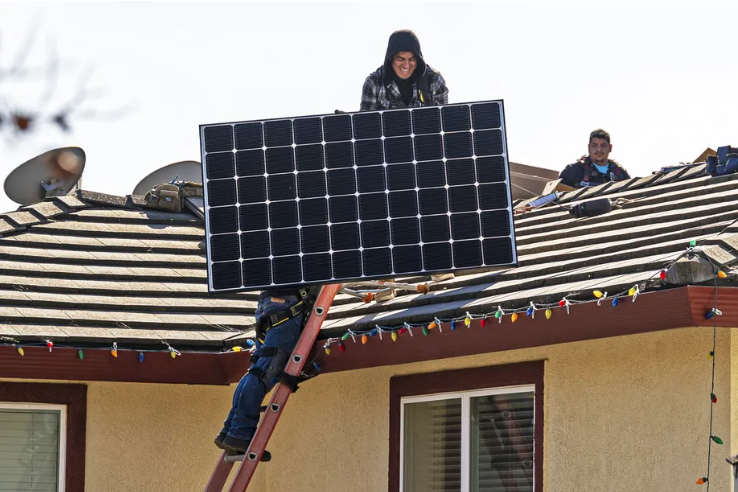
On January 1, Americans became eligible to save thousands of dollars when they buy electric cars, induction stoves, and modern appliances under the Inflation Reduction Act that Democrats passed last fall.
Most American homes still use fossil fuels, specifically natural gas, for heating, cooking, and hot water. To reach the Biden administration’s goal of slashing buildings’ climate footprint in half by 2032, many of those homes will need to be electrified. Swapping out the gas stove for induction and a natural gas furnace for an electric heat pump plugs the building more fully into the electric grid. Today, that grid might still be powered by some coal and gas, but years from now, it will run predominantly on clean energy like wind and solar. Electrifying homes now is key to reducing the US carbon pollution in the decades to come.
A major part of the new law’s $369 billion for climate initiatives is rebates and tax credits aimed at helping consumers switch from fossil fuels to electricity. While the IRA also includes big payouts for utilities and manufacturers to boost a cleaner economy domestically, the consumer incentives address a different set of problems — rising energy bills, and tackling the most stubborn sources of greenhouse gas pollution.
There’s money for rooftop solar; electric vehicles, clothes dryers, stoves, and ovens; heat pumps for heating, cooling, and hot water; electric panels and wiring. The law also includes programs that cover the costs of insulation and weatherization to cut a building’s energy usage.
Not everyone will need to replace their furnace, car, or stove in 2023. But even if you aren’t planning to do so, or you don’t own your home, there are ways the IRA’s incentives can apply, and it’s important to start thinking about them early to take full advantage.










